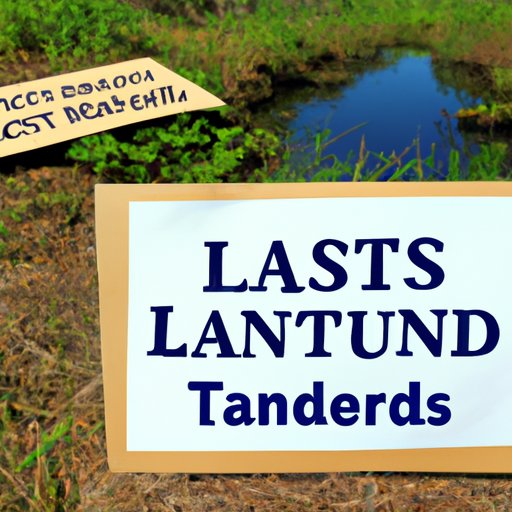Introduction
Are you concerned about the rapid loss of natural habitats and green spaces in your community? Do you worry about the long-term impact of climate change and the depletion of natural resources? If so, you may be interested in learning about land trusts. In this article, we’ll explore what land trusts are, their environmental and social benefits, how they work, successful examples, challenges and obstacles they face and how to support them.
Environmental and Social Benefits of Land Trusts
Land trusts are vital mechanisms that help to conserve our environment and preserve land for public use. Some of the key environmental and social benefits of land trusts include:
Preservation of natural habitats
Land trusts work to preserve natural habitats such as forests, wetlands, and grasslands. This helps to protect biodiversity, maintain local ecosystems, and promote the survival of endangered species.
Conservation of clean drinking water sources
Land trusts also work to conserve clean drinking water sources by protecting watersheds, wetlands, and other areas that are crucial to maintaining water quality. This helps to ensure that our communities have access to clean, safe drinking water.
Provision of public recreation areas
In addition to preserving natural habitats and clean water sources, land trusts also create public recreation areas. This provides opportunities for communities to enjoy outdoor activities such as hiking, fishing, and camping.
How Land Trusts Work
At their core, land trusts are nonprofit organizations that work to protect land from development or undesirable uses. They do this by using legal mechanisms that allow them to hold land in trust, with the aim of preserving it for public use. Essentially, land trusts work to ensure that land is protected in perpetuity, so that future generations can continue to enjoy its benefits.
Legal mechanisms involved in land trust
There are several legal mechanisms involved in land trusts, including conservation easements and outright ownership. Conservation easements are agreements between landowners and land trusts that limit development and ensure that the land is used for conservation purposes. Outright ownership allows land trusts to purchase land and protect it from development.
Protection of land from development or undesirable uses
One of the primary goals of land trusts is to protect land from development or undesirable uses. Land trusts work with landowners to find ways to preserve the land while still allowing them to retain ownership. This can involve negotiating agreements that limit development or finding ways to purchase the land outright.
Examples of Successful Land Trusts and Their Impact
There are many successful land trusts around the world that have had a significant impact on preserving land and promoting conservation. Two successful land trust organizations that have made a positive impact are:
The Nature Conservancy
The Nature Conservancy is a global nonprofit organization that works to protect natural lands and water sources. They have been instrumental in conserving more than 119 million acres of land worldwide, and have helped to protect numerous endangered species.
The Trust for Public Land
The Trust for Public Land is a US-based nonprofit organization that works to create parks and protected public spaces. They have been successful in creating more than 5,000 parks and protected public spaces across the country.
Challenges and Obstacles Faced by Land Trusts
Despite their success, land trusts face several challenges and obstacles in their work. Two of the most significant challenges they face are:
Securing funding for projects
Land trusts rely on funding from various sources, including grants, donations, and government funding. However, securing funding for projects can be challenging, and many land trusts struggle to secure the necessary funds to undertake conservation projects.
Navigating legal complexities
The legal mechanisms involved in land trusts can be complex, and navigating them can be challenging for even the most experienced attorneys. This can make it difficult for land trusts to negotiate agreements and ensure that land is adequately protected.
Land Trusts and Marginalized Communities
Land trusts also play an essential role in protecting lands that are significant to Indigenous people and marginalized communities. By protecting these lands, land trusts help to preserve cultural heritage and promote social justice.
How to Support Land Trusts
There are several ways that you can support land trusts in their work:
Donations
One of the most effective ways to support land trusts is through donations. Many land trusts rely on donations to fund their conservation projects, and your contribution can go a long way in helping to protect our natural and cultural heritage.
Volunteering
Land trusts also rely on volunteers to help with various tasks, such as land restoration, trail maintenance, and outreach efforts. By volunteering your time, you can help to ensure that the land is adequately maintained and protected.
Advocacy
Finally, you can support land trusts by advocating for conservation policies and legislation that protect the environment and promote social justice. This can involve contacting elected officials, attending public meetings, and educating others about the importance of conservation.
Conclusion
In conclusion, land trusts play a vital role in preserving our natural and cultural heritage. They work to protect natural habitats, conserve clean drinking water sources, and provide public recreation areas. Despite their successes, land trusts face several challenges, including funding and navigating legal complexities. By supporting land trusts through donations, volunteering, and advocacy efforts, we can help to ensure that our natural and cultural heritage is protected for future generations.
